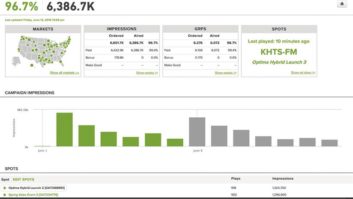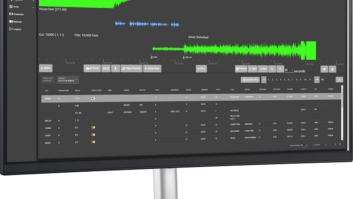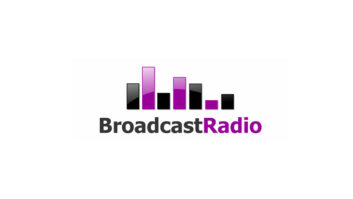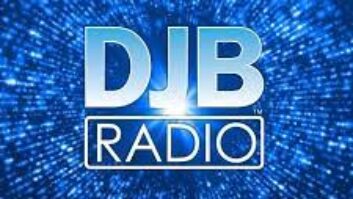
Alexandre Martinez
CLARET, France — As modes of media consumption continue to evolve, broadcasters must innovate if they are to strengthen their market shares and increase their listener pools.
In today’s media marketplace, the concept of “radio listener” is being replaced by the broader concept of “content consumer” or, in language popularized by social media, a “follower.”
This term is quite apt. From the moment a person wakes up to the moment he or she falls asleep, it is possible to follow favorite news sources. What draws these followers is the quality and timeliness of the content.
Content is therefore king and news content is especially valuable, provided it is fresh, frequently updated, and of interest to the target audience. Thus, as broadcasters adapt to changing modes of media consumption, as well as stiff competition and economic pressures, they must deploy solutions that not only help them to optimize production time, reduce the time-to-air ratio, and deliver content onto multiple platforms (radio receivers, car radio, smartphones, tablets), but also ensure that content itself is rich and engaging.
Today’s software-based radio automation solutions are playing a key role in enabling all these competitive advantages.
MOBILE CAPABILITIES
News reporters and freelance journalists today are scattered all around the globe. They are mobile, and they need to be prepared to jump on a story and let the world know about it as quickly as possible. Radio automation software equipped with mobile capabilities is providing the tools necessary to bring rich field reports into the broadcast quickly and easily. Utilizing well-designed interfaces, reporters can make use of their tools on a multitude of connected devices.
Using HTML5 GUIs on top of a service-oriented architecture, the broadcaster can easily utilize various types of third-party integration. In addition to accelerating deployment, the absence of a heavy client reduces the need for training and makes for faster incorporation of freelancers into the production team. With access to an array of sophisticated tools, reporters in the field can begin producing content for broadcast purposes.
In addition to supplying their own contributions — audio, copy, and even complementary stills or video — to news stories, journalists working in the field now can remotely access media resources back at the studio.
Tapping into the studio or network group’s database of jingles, archived audio files, and similar resources, the journalist can construct content that shares the sound and structure of studio-produced content. When journalists and reporters need to reach colleagues for collaboration or listeners for immediate feedback, the automation solution can allow them to work on a project concurrently and in real time.
The integration of cloud-based processing into radio automation solutions also has had a transformative effect on how journalists and reporters work in the field. By moving critical and computationally-demanding processing tasks to server-based engines in the cloud, an automation system can enable the mobile user to trigger and manage key operations such as transcoding, rendering, mastering, encryption, quality control and proxy generation. With all of these remarkable capabilities at their fingertips, staff and freelancers in the field are positioned to deliver more compelling content more quickly than ever.
BROADER AUDIENCE
Consumers want convenient access to content, no matter where they are. Consequently, if they wish to “stay in the game,” broadcasters must target their content to an increasing number of platforms.
In fact, to be highly competitive on a crowded playing field, broadcasters need to distribute and monetize their content on several channels, and they must offer more than just audio. In addition to providing broadcasts over the air and via streaming, they must also use their websites and social media platforms to deliver video, images and text.
While strengthening their own social media platform, they also must ensure that their content is accessible via popular platforms such as YouTube, Spotify and Deezer.
With unique talent, original shows and interesting news programs, a broadcaster has numerous valuable assets that can be used to engage new followers and maintain an existing audience. With a versatile radio automation solution that includes built-in publishing tools, broadcasters can very simply and quickly push this content onto different platforms, parallel to the AM-FM linear broadcast.
What broadcasters need most today are smart solutions that will enable them to reduce their costs and increase revenues. In the case of radio automation technology, mobility brings agility in responding to important events while also enhancing field-production capabilities and accelerating overall time to market. Integrated publishing capabilities likewise have become a vital element of radio automation.
From a single ecosystem, the broadcaster can drive content delivery across numerous channel and platform types, thereby offering content when and where followers want it and, ultimately, maximizing its audience coverage.
Alexandre Martinez is pre-sales manager for Netia.
Radio World welcomes other points of view. Please send comments to [email protected].











